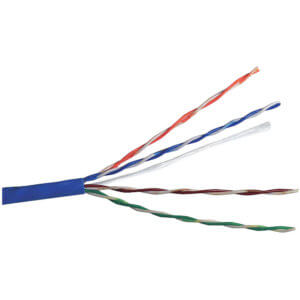 Are you building a new home or remodeling your current one? If so, while the walls are open, have some ethernet locations put in. Twenty plus years ago, when building a new home you would typically walk through the house with your builder, electrician or audio/video company before drywall went up and mark out low voltage television locations. Most of the time, unless an A/V person was involved, you would get one wire – an RG-59 or RG-6 cable TV wire per location. While that worked fine for most people that just wanted to hook up a basic television, it was and is totally inadequate to do pretty much anything additional.
Are you building a new home or remodeling your current one? If so, while the walls are open, have some ethernet locations put in. Twenty plus years ago, when building a new home you would typically walk through the house with your builder, electrician or audio/video company before drywall went up and mark out low voltage television locations. Most of the time, unless an A/V person was involved, you would get one wire – an RG-59 or RG-6 cable TV wire per location. While that worked fine for most people that just wanted to hook up a basic television, it was and is totally inadequate to do pretty much anything additional.
Sadly, from what I am still seeing this many years later, most builders and remodelers still consider a television location to be a single RG-6 cable. Category cable such as Cat-5e, Cat-6, Cat-7, generally known as ethernet cable, is amazingly versatile, and not very expensive per foot. It can be used to extend a network, send audio, video, control, telephone and even power some devices. At the very least, please insist on having at least one category ethernet cable (typically Cat-5e or Cat-6 these days) be pulled to each television location. It is better to have two to each location and have them all pulled back to a centralized location. Additional single ethernet cables could/should be pulled for dedicated Wi-Fi extender locations, considering the direction Wi-Fi hardware and standards are heading.
Of course the best thing to do would be to hire an Audio Video & Networking Specialist to help you plan out your wiring needs, develop a system plan and work with your builder or remodeler to get the appropriate wires in the wall at the appropriate time. Even if they won’t allow a third party in to pull wires, an A/V specialist can still consult with them on your behalf. Don’t trust a builder that says “Don’t worry, I’ll handle it”, because without a plan/system in mind of what will satisfy your needs, it is nearly impossible for them to handle it appropriately unless they luck out. Getting ethernet wires in the wall now can actually save you lots of money in the future and give you much better overall home technology results.
To learn more or set up a consultation, contact Steve.
